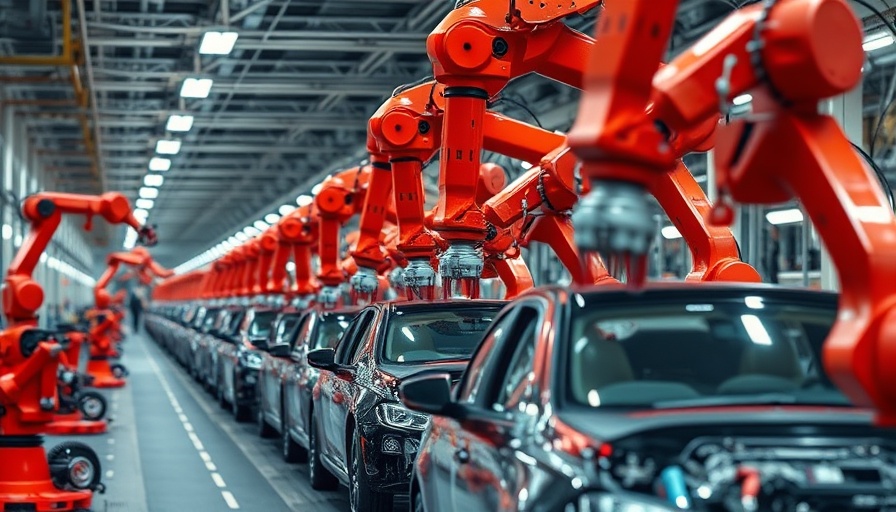
The Coming Storm: U.S. Auto Industry Faces Imminent Slowdown
The American auto market is on the verge of its most significant downturn since the COVID-19 pandemic, driven primarily by shifting international trade policies and supply chain disruptions. Analysts predict a notable decline in vehicle production and sales, with repercussions that have the potential to reshape the automotive landscape well into 2025.
Narrowing Supply: How Tariffs Are Limiting Vehicle Availability
Recent tariffs imposed by the previous administration, particularly a 25 percent tax on all vehicles and auto parts not manufactured domestically, have dramatically altered how foreign automakers engage with American consumers. Brands like Audi, Aston Martin, and Bentley are now leaning heavily on existing inventories rather than introducing new models, resulting in a projected decrease of over 1.55 million vehicles produced within North America next year. With total new vehicle production expected to settle at around 87.91 million units by the end of 2025—marking a second consecutive annual decline—the ramifications are extensive.
The Domino Effect: What This Means for Consumers and Dealerships
The significant reduction in vehicle availability could have dire consequences not only for consumers seeking to purchase new vehicles but also for dealerships and the broader automotive aftermarket industry. With about 1.4 million Japanese vehicles exported to North America every year, the anticipated shortfall could wipe out this substantial pipeline. The gap will leave consumers with fewer choices, creating upward pressure on prices and shrinking dealer margins.
Domestic Production: A Necessary but Gradual Shift
In light of recent challenges, a renewed push for increased domestic production is underway. Automakers such as Volvo, Nissan, and Honda have announced plans to enhance their manufacturing footprint in the United States. For instance, Nissan has confirmed it will produce the popular Rogue SUV in America going forward. While these measures are promising, industry insiders caution that they are not immediate solutions and could take years to manifest significant results.
Economic Ripple Effects: Job Losses and Financial Strain
The impact on the workforce is another pressing concern. S&P Global forecasts a potential 3 percent decline in U.S. auto sales this year, alongside a projected 9 percent drop in North American vehicle output. This contraction nearly always results in job cuts, as evidenced by Stellantis' recent announcement of temporary layoffs affecting 900 workers across five U.S. facilities. The increased economic strain will likely concern consumers and industry stakeholders alike.
Cost Implications: Will Domestic Production Save Consumers Money?
There's a prevailing irony to consider: while the push for domestic production is rooted in an effort to bolster American jobs, it might not result in cheaper vehicles for consumers. Approximately half of all vehicles sold in the U.S. are still imports, and even domestically produced cars rely heavily on imported parts, often up to 60 percent. Tariffs and rising labor costs could render U.S.-manufactured vehicles pricier than their imported counterparts, possibly counteracting intended benefits.
Future Trends: What Lies Ahead for the Long-Term?
As we gaze into the horizon of the U.S. automotive landscape, several trends are emerging. With decreasing imports and increasing domestic efforts, consumers might increasingly favor brands that offer sustainable practices and local manufacturing. The shift could also fuel innovation in electric vehicles (EVs) and alternative energy sources, as consumers seek more environmentally friendly choices. This, combined with a tightening of supply, could lay the groundwork for a future market where eco-conscious vehicles take precedence.
Concluding Thoughts: Time to Stay Informed
The U.S. auto industry's anticipated slowdown is multifaceted, with far-reaching implications for consumers, dealerships, and manufacturers alike. The intertwining factors of tariffs, production shifts, and consumer behaviors will shape the industry landscape. Having a strategic understanding of these developments is crucial for anyone invested in purchasing a vehicle or involved in the automotive sector.
For more insights on the automotive industry, subscribe to our newsletter to keep updated on the latest trends, news, and developments. Your awareness and knowledge can help you make informed choices in this ever-evolving market.
 Add Row
Add Row  Add
Add 




 Add Row
Add Row  Add
Add 

Write A Comment